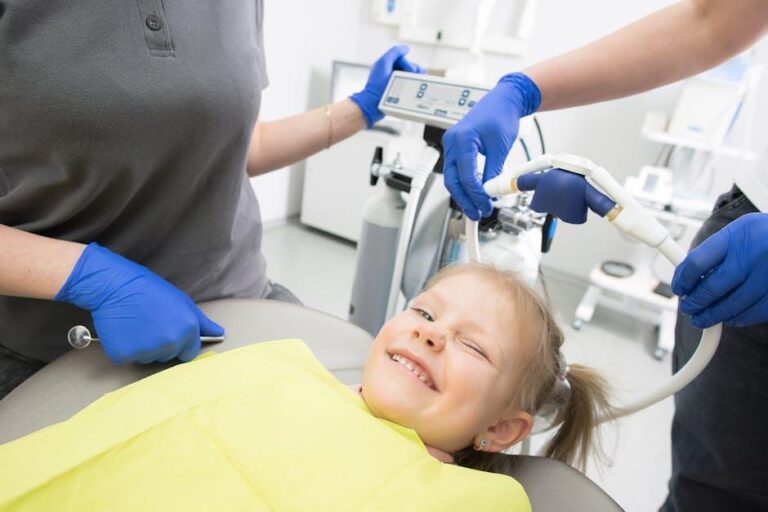1 in 3 Kids Has Dental Problems, Poll Finds – U.S. News & World Report
Oral health is a crucial but often overlooked aspect of childhood wellness. Recent findings published by U.S. News & World Report reveal a concerning truth: 1 in 3 kids in the United States suffers from dental problems. These statistics serve as a wake-up call for parents, educators, and healthcare providers alike. Understanding the causes, consequences, and solutions surrounding this issue can help safeguard children’s smiles and overall health.
The Staggering Statistics Behind Kids’ Dental Problems
The poll conducted across various states focused on children under the age of 12 and uncovered these key insights:
- 33% of children have experienced tooth decay or cavities.
- A significant number have untreated dental issues due to limited access to care.
- Lower-income families disproportionately face dental health challenges, correlating with reduced preventive care.
These numbers highlight the pervasiveness of childhood dental disease and stress the urgent need for enhanced awareness and intervention.
Common Dental Problems in Children
Understanding the types of dental problems children face can guide parents to recognize early signs and seek prompt treatment. The most common issues include:
- Tooth Decay and Cavities: Caused by bacteria that produce acids after sugar consumption, eroding tooth enamel.
- Gum Disease (Gingivitis): Inflammation due to plaque buildup that can lead to bleeding and discomfort.
- Enamel Hypoplasia: Developmental defects causing weak or thin enamel, increasing sensitivity and risk of decay.
- Dental Trauma: Injuries from accidents can cause chipped, broken, or knocked-out teeth.
Why Are Childhood Dental Problems So Common?
Multiple factors contribute to the high prevalence of dental issues among kids:
- Poor Oral Hygiene Habits: Inadequate brushing and flossing allow plaque buildup.
- Sugar-Heavy Diets: Frequent consumption of sugary snacks and drinks fuels bacteria growth.
- Lack of Dental Visits: Irregular or no dental check-ups prevent early detection and treatment.
- Socioeconomic Barriers: Limited access to affordable dental care and education.
- Parental Awareness: Some parents underestimate the importance of baby teeth and routine care.
Impact of Poor Dental Health on Children
Dental problems in childhood can have far-reaching effects beyond just an unpleasant toothache:
| Impact Area | Description |
|---|---|
| Physical Health | Infections or abscesses may spread, causing serious complications. |
| Nutrition | Pain can lead to difficulty eating, causing inadequate nutrition. |
| Academic Performance | Tooth pain may result in missed school days and difficulty concentrating. |
| Self-Esteem | Visible decay or missing teeth can affect a child’s confidence and social interactions. |
Practical Tips for Preventing Childhood Dental Problems
Good oral care habits start early and can dramatically reduce the risk of dental disease. Here are expert-approved practical tips for parents:
- Start Early: Begin cleaning your baby’s gums before teeth erupt and brush twice daily once teeth appear.
- Use Fluoride Toothpaste: Fluoride strengthens enamel and helps prevent cavities—consult your dentist on the right amount.
- Limit Sugary Foods & Drinks: Opt for healthy snacks and minimize juice or soda consumption.
- Regular Dental Check-Ups: Schedule your child’s first dental visit by age one and maintain routine appointments.
- Lead by Example: Model consistent brushing and flossing habits for your kids.
- Educate Your Child: Teach them the importance of oral hygiene in a fun and positive way.
Case Study: How Early Intervention Made a Difference
Consider the story of 6-year-old Emma. Her parents noticed she often complained of tooth pain but delayed dental visits due to busy schedules. Eventually, a school dental screening detected early cavities. With prompt treatment and renewed oral hygiene habits encouraged by her dentist, Emma’s tooth decay was arrested, preventing further damage. This highlights the critical value of early dental evaluations and proactive care.
Access to Dental Care: Challenges and Solutions
One major barrier many families face is access to affordable dental care. Barriers include:
- Scarcity of pediatric dentists in rural or underserved areas.
- Lack of dental insurance or coverage gaps.
- Language and cultural obstacles.
Community-level solutions can help bridge these gaps:
- School-Based Dental Programs: Enable screenings and preventive treatments on-site.
- Mobile Dental Clinics: Reach remote areas with essential dental services.
- Public Health Initiatives: Promote fluoride varnish programs and oral health education.
- Improved Insurance Policies: Expanding Medicaid dental coverage for children.
The Role of Parents and Caregivers
Parents play a pivotal role in nurturing good dental habits and advocating for their children’s oral health:
- Be consistent with brushing and flossing routines.
- Advocate for regular dental visits, even if no problems are visible.
- Encourage balanced nutrition minimizing sugary snacks.
- Stay informed about oral health milestones and warning signs.
Empowered with knowledge and practical action steps, families can significantly lower the risk of childhood dental issues.
Conclusion: Protecting Our Children’s Smiles
The revelation that 1 in 3 kids has dental problems is a clear signal that childhood oral health must become a priority nationwide. Tooth decay and other dental conditions can hinder children’s growth, learning, and confidence, but fortunately, most problems are preventable. By embracing early dental care, fostering healthy habits, improving access to treatment, and raising awareness, parents and communities can help ensure that every child enjoys a healthy, pain-free smile that lasts a lifetime.
Start today by scheduling that dental check-up, teaching proper brushing techniques, and providing nutritious meals low in sugar. Together, we can tackle this silent epidemic and give our children the gift of optimal oral health.


